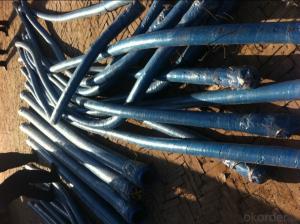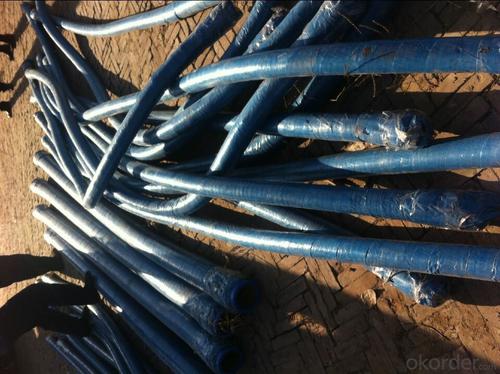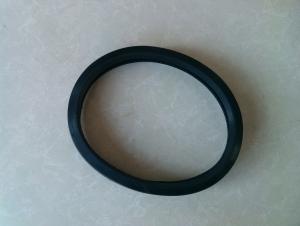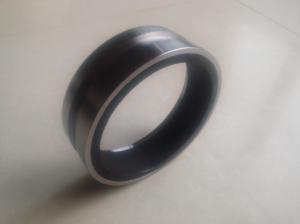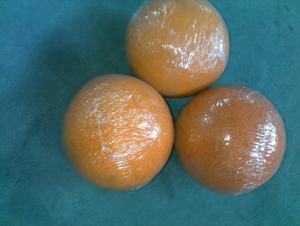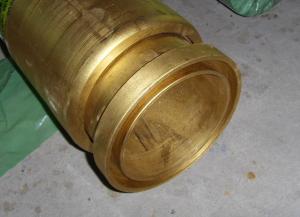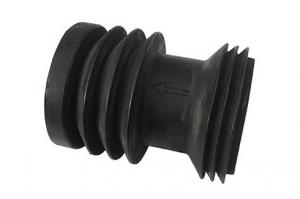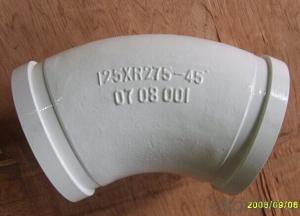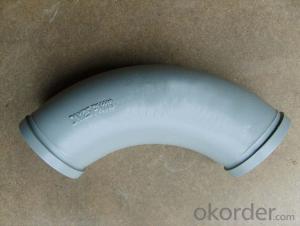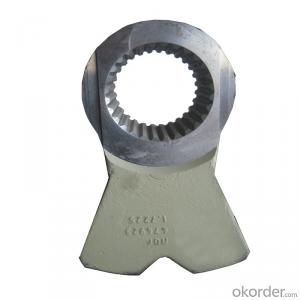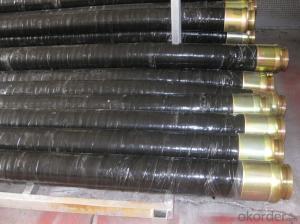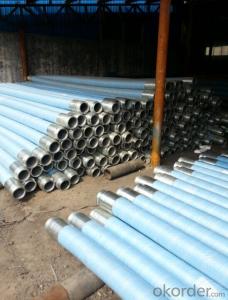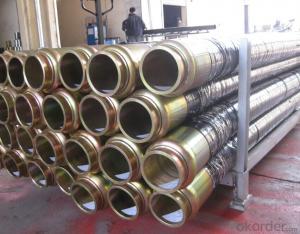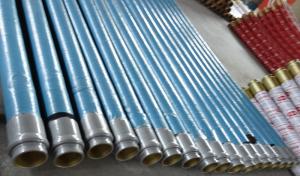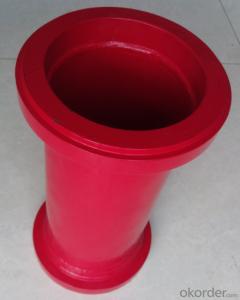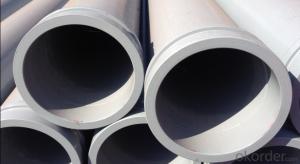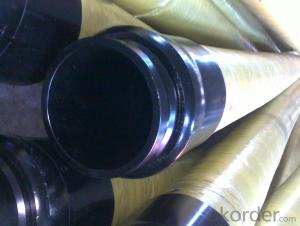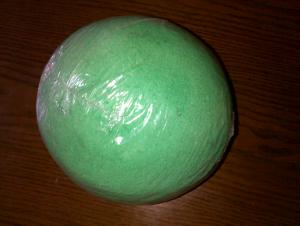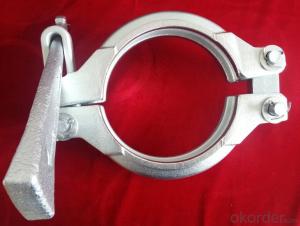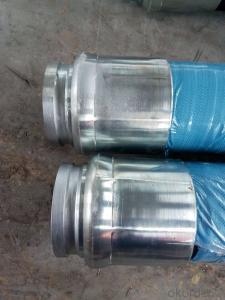RUBBER END HOSES with two sides flange 6 METERS DN 80 MM
- Loading Port:
- Shanghai
- Payment Terms:
- TT or LC
- Min Order Qty:
- 5 pc
- Supply Capability:
- 1000 pc/month
OKorder Service Pledge
OKorder Financial Service
You Might Also Like
Product Description:
Product Name:High Capacity Rubber End Hose DN80MM Length: 6m
1. Specification
Type: 2 layers steel wire or 4 layers steel wire
working pressure: 85bar or 1232PSI
Dimensions: DN80, DN100, DN125, DN150, 3'', 4'', 5", 6''
Flanges: Single end, or double ends
Coupling: Painted or Galvanized.
Different Length available.
Notes: total series of High Capacity concrete pump rubber hose for different brand concrete pump(PUTZMEISTER, SCHWING, CIFA, SANY, ZOOMLION, IHI, KYOKUTO Etc) available from us, different length of rubber hose as customers requirments .
2. Application
Widely used on concrete pump truck, concrete placing boom, trailer concrete pump etc, for concrete delivery and placement pumping.
Our rubber hoses have been successfully exported to many countries from 1998, Our main markets as below: Middle East, Southeast Asia, America, Brazil, Italy, Russia, South Africa etc
Aiming at the largest concrete pump parts manufacturer, and reliable, professional supplier in China, we can supply concrete pump elbows, delivery pipes, casting or forging couplings, end rubber hoses, rubber pistons, tungsten wear plates, delivery cylinders, and other hydraulic parts, one stop service for your concrete pump parts and accessory business.
3. Package and Delivery
Every 200pcs put in one 20 feet container.
4. Production
Our rubber hoses are made with advanced technology of weaving and natural rubber formula.
5. Primary Competitive Advantages
1) Brand-name Parts
2) Country of Origin
3) Competitive Price
4) Good Product Performance
5) Prompt Delivery
6) Quality Approvals
7) Good Reputation
8) Expedite Communication
9) Good Packaging
10) Distributorships Offered
11) One Step Service
12) Good Quality Service
13) Small Orders Accepted
14) Overseas Service Branches
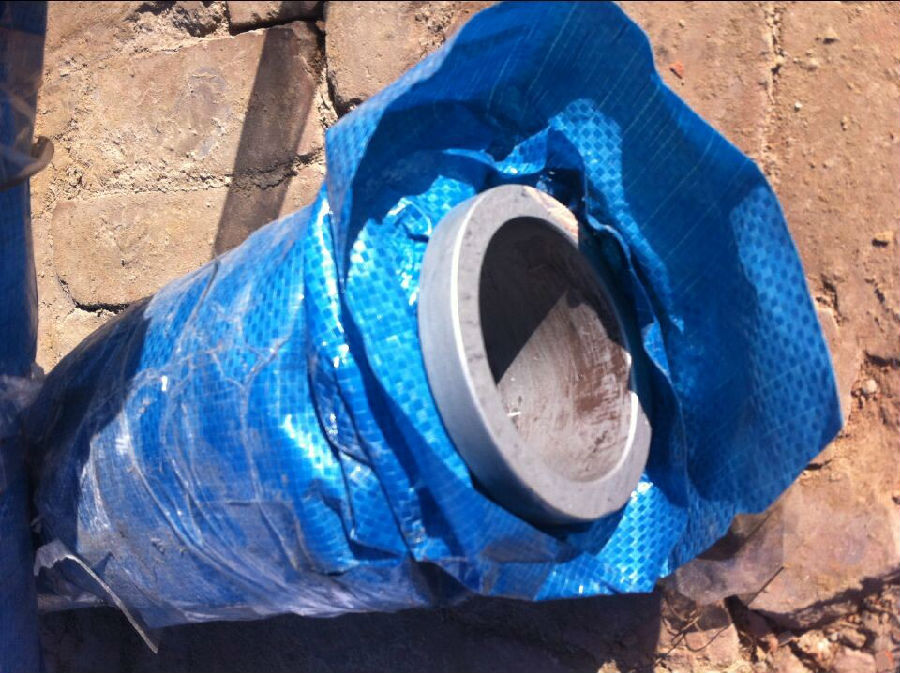
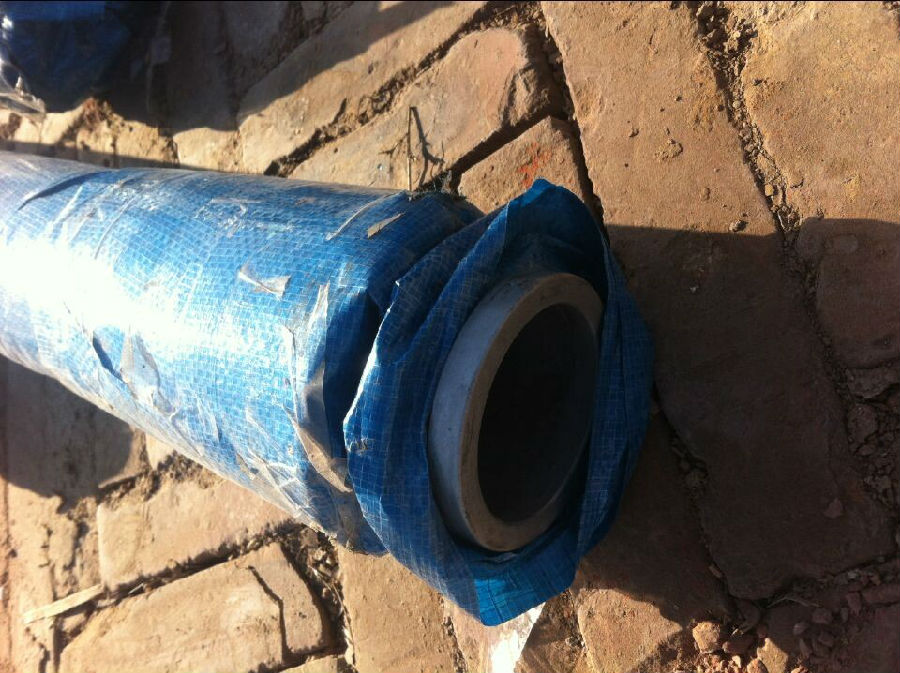
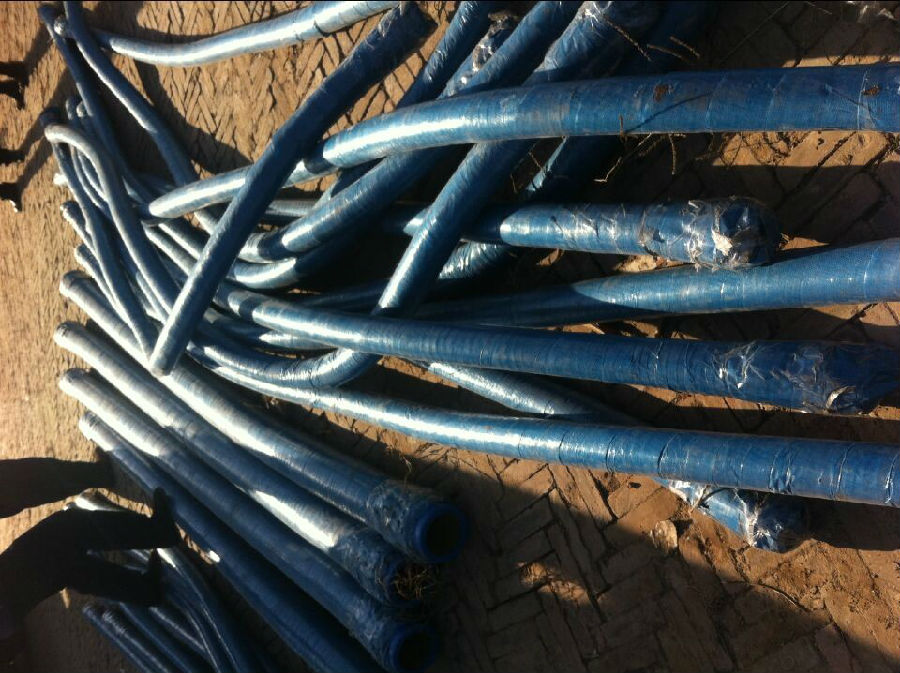
- Q: What is the function of a concrete pump hopper grate lever?
- The function of a concrete pump hopper grate lever is to control the opening and closing of the hopper grate on a concrete pump. The hopper grate is a metal grid that covers the hopper, which is the chamber where the concrete is loaded before being pumped. The lever allows the operator to easily manipulate the position of the grate, either opening it to allow concrete to flow into the hopper or closing it to prevent any debris or foreign objects from entering the pump system. This control is crucial for ensuring the smooth and efficient operation of the concrete pump, as any obstructions or contaminants in the hopper can potentially damage the pump or affect the quality of the pumped concrete. By using the hopper grate lever, the operator can maintain a steady flow of concrete into the pump and ensure that only clean and properly mixed concrete is being used. Additionally, the lever provides a safety measure, as it allows the operator to quickly close the grate in case of any emergencies or malfunctions. Overall, the concrete pump hopper grate lever plays a vital role in the proper functioning and maintenance of a concrete pump system.
- Q: What are the different types of concrete pump hopper agitator shaft seals?
- There are various types of concrete pump hopper agitator shaft seals, including packing seals, mechanical seals, and lip seals.
- Q: Can I get spare parts for both concrete pumps with and without boom stabilizers?
- Yes, spare parts are available for both concrete pumps with and without boom stabilizers. When it comes to concrete pumps, manufacturers typically offer a wide range of spare parts to ensure the longevity and smooth operation of their equipment. These spare parts can include hydraulic components, valves, hoses, seals, wear plates, pipes, and many others. Whether your concrete pump has a boom stabilizer or not, you can easily find and purchase spare parts from the manufacturer or authorized dealers. Additionally, there are also aftermarket suppliers who specialize in providing spare parts for various concrete pump models. So, regardless of the specific features of your concrete pump, you can rest assured that spare parts are readily available to keep your equipment running smoothly.
- Q: What is the purpose of a concrete pump carbide wear plate?
- A concrete pump carbide wear plate serves the purpose of facilitating the transfer of concrete from the hopper to the desired location by providing a resilient and long-lasting surface. Concrete pumps utilize a piston system to propel the concrete through the pump and into the delivery line. Throughout this process, the wear plate acts as a safeguard against the abrasive nature of the concrete. Concrete comprises various components such as sand, gravel, cement, and water. When forced through the pump, the concrete's abrasive particles can inflict substantial damage on the pump's internal elements, leading to reduced efficiency and increased maintenance expenses. The carbide wear plate is specifically engineered to endure the elevated pressures and abrasive forces encountered during the concrete pumping procedure. Constructed from a robust and durable material known as carbide, this wear plate supplies a resilient surface that minimizes wear and tear on the pump's internal parts. By incorporating a concrete pump carbide wear plate, contractors and construction experts can ensure the efficient and effective operation of their concrete pumps, with minimal interruptions for repairs. This not only saves time and money but also guarantees that the concrete is transported smoothly and consistently to the desired location, resulting in high-quality construction projects.
- Q: Are there any specific guidelines for the installation of seal kits or O-rings in concrete pump spare parts?
- Yes, there are specific guidelines for the installation of seal kits or O-rings in concrete pump spare parts. Here are some general guidelines to follow: 1. Safety precautions: Always ensure that the concrete pump is turned off and depressurized before attempting to install any seal kits or O-rings. Wear appropriate safety gear, such as gloves and goggles, to protect yourself during the installation process. 2. Preparation: Thoroughly clean the area where the seal kits or O-rings will be installed. Remove any debris or old seal remnants to ensure a clean and smooth surface for installation. 3. Inspection: Before installing new seal kits or O-rings, inspect them for any defects or damage. If any issues are found, replace the faulty parts with new ones. 4. Lubrication: Apply a small amount of compatible lubricant or hydraulic oil to the seal kits or O-rings to aid in their installation and prevent damage during the process. Be sure to use a lubricant that is compatible with the materials used in the seal kits or O-rings. 5. Proper alignment: Carefully align the seal kits or O-rings with their respective grooves or seating areas in the concrete pump. Ensure that they are properly seated and positioned before proceeding. 6. Correct installation technique: Use the appropriate tools and techniques to install the seal kits or O-rings. Avoid excessive force or bending, as this can lead to damage or improper sealing. 7. Testing: After the installation is complete, test the concrete pump to ensure that the seal kits or O-rings are functioning properly. Check for any leaks or abnormal behavior during operation. 8. Regular maintenance: Once the seal kits or O-rings are installed, it is important to regularly inspect and maintain them to ensure their longevity and optimal performance. Follow the manufacturer's recommended maintenance schedule and guidelines for best results. It is important to note that these guidelines are general in nature and may vary depending on the specific make and model of the concrete pump. Therefore, it is always recommended to consult the manufacturer's instructions and guidelines for the particular seal kits or O-rings being installed.
- Q: What are the indications of a faulty concrete pump hydraulic motor?
- There are several signs that can indicate a malfunctioning hydraulic motor in a concrete pump. Some common indicators to watch for are: 1. Power loss: If the hydraulic motor is not working correctly, you may notice a significant decrease in power in the concrete pump. The motor may struggle to generate enough force to effectively pump the concrete, resulting in slower or weaker output. 2. Unusual noises or vibrations: A faulty hydraulic motor may produce abnormal sounds or vibrations while in operation. This could be due to damaged internal components or misalignment, indicating an issue with the motor. 3. Leaking fluids: Proper flow and pressure of hydraulic fluid are essential for the functioning of hydraulic motors. If you observe any fluid leaks around the hydraulic motor or its associated parts, it could be a sign of a faulty motor that requires attention. 4. Overheating: A malfunctioning hydraulic motor may overheat due to increased friction or internal problems. If you notice excessive heat emanating from the motor or its associated parts, it is crucial to address the problem promptly to prevent further damage. 5. Inconsistent or jerky movement: A faulty hydraulic motor can cause the concrete pump to operate unevenly or jerkily. This can result in uneven pouring or difficulty in controlling the flow of concrete, indicating an issue with the motor's performance. 6. Increased energy consumption: A faulty hydraulic motor may consume more energy to function properly. This can lead to a noticeable rise in energy usage, which can be observed through higher electricity bills or added strain on other components of the pump's system. It is important to remember that these signs may vary depending on the specific make and model of the concrete pump hydraulic motor. It is always recommended to consult the manufacturer's guidelines or seek professional assistance to effectively diagnose and address any issues with the hydraulic motor.
- Q: How do I maintain and clean concrete pump spare parts?
- Maintaining and cleaning concrete pump spare parts involves regular inspections, lubrication, and following proper cleaning procedures. Firstly, conduct routine checks to identify any signs of wear, damage, or loose connections. Lubricate the moving parts as recommended by the manufacturer to ensure smooth operation and prevent rust. When cleaning, use a mild detergent and water solution to remove any dirt, debris, or concrete residue. Avoid using harsh chemicals or abrasive tools that could damage the parts. It's crucial to follow the manufacturer's guidelines and consult the equipment manual for specific instructions on maintaining and cleaning concrete pump spare parts.
- Q: What do these types of concrete pumps mean?
- After the 16 is the motor power kW (landlord 16 seems to have a mistake, usually 110) or the manufacturer's serial number.
- Q: Can I get spare parts for concrete pump boom arms and pipes?
- Yes, spare parts for concrete pump boom arms and pipes are available. Many manufacturers and suppliers offer a wide range of spare parts specifically designed for concrete pump boom arms and pipes. These spare parts can be easily found and purchased from authorized dealers or online stores. It is important to ensure that you provide accurate specifications and details of your concrete pump model to find the correct spare parts for replacement or repair.
- Q: What is the function of a concrete pump hydraulic motor?
- The concrete pump hydraulic motor serves the purpose of supplying the essential power and force needed for the operation of the concrete pump. Its responsibility lies in transforming hydraulic energy into mechanical energy, thereby enabling the pump to function with efficiency and effectiveness. By propelling the pumping mechanism, it allows the concrete to be transported through the pipeline and delivered to the desired destination. Additionally, the hydraulic motor governs the pump's speed and direction, facilitating accurate placement of the concrete. In conclusion, the concrete pump hydraulic motor plays a vital role in guaranteeing the seamless operation and triumphant delivery of concrete in construction endeavors.
Send your message to us
RUBBER END HOSES with two sides flange 6 METERS DN 80 MM
- Loading Port:
- Shanghai
- Payment Terms:
- TT or LC
- Min Order Qty:
- 5 pc
- Supply Capability:
- 1000 pc/month
OKorder Service Pledge
OKorder Financial Service
Similar products
Hot products
Hot Searches
Related keywords
